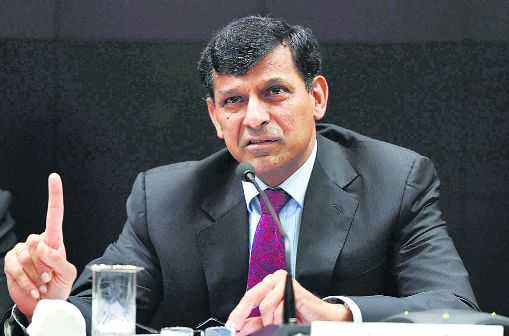
Hopeful: The markets are imperfect, brutal and dehumanising. However, Rajan is among the lot that has not lost hope. Photo: Reuters
Sandeep Dikshit
For a brief while, the clean shaven, youthful and ever-ready-for-a-byte Raghuram Rajan was the poster boy of Indian financial journalism. His abrupt resignation as the RBI governor catapulted his columns and books onto the top of the reading list. If the expectation is of a tell-all tale about the shenanigans in the stately corridors of the RBI’s manors in Mumbai and Delhi, Rajan barely touches on that.
In this tome, he acquires the professorial avatar to which he has retreated after quitting the RBI. What follows is a read on the world’s economic trajectory, the gradual falling in place of the nuts and bolts of institutions, the arguments in communities and the corridors of power that precede and succeed the changes in the wielding of economic power and the fascinating tussles at various phases of human history among its actors of the day. Rajan gives the old story of the tussle between the markets and the state a more commonplace and hence easily understandable touch by inserting the subject of communities in the mix. The economic histories and prognosis of the past become more readable and enjoyable when presented as socio-economics with the addition of people and their feelings.
At one point the main actors were the church, the monarch, guilds, the serf and the landowner. Their intertwining gave way to capitalism as we know it. Another turning point is now close at hand. How do we redefine the relationship of the three major players — state, the community and the markets — after the revelations that the mega tech companies were not really treading the straight and the narrow path? Now that the governments, till now sleeping at the wheel, move to punish and overcorrect, the focus should not be just on the offending pillar — the market — because that will subsequently give rise to cronyism that will be more difficult to correct. Rajan’s solution is a disappointment — push the other two pillars up.
The evolution and foundation theory of capitalism, or in other words the history of socio-economics that originated from the west, has been adequately chronicled. Rajan makes that a little more made interesting with anecdotes and similes. Some aspects and tendencies among communities do have a resonance here in India for instance the resentment against the middle-class elite for insulating themselves against the economic forces they have unleashed. This has given rise to populism which, Rajan argues, at its core is “a demand for respect, and enveloped in the anger of those who feel they have been ignored.” Haven’t we heard this explanation a thousand times before?
Rajan’s brief stay at the RBI should have helped him impose a sub-continental or even Asian perspective to global economic history. In the end, the reader is reduced to an humbled appreciation of the author’s sweeping reading list, his scholarship and the admirable but easy-enough virtue of parking all his arguments in the left-liberal boat whether it is about the dilemmas of immigration, non-tariff barriers and intellectual property rights. However, Rajan’s treatment of these dilemmas is so wide ranging, covering all possible perspectives, that they often give a glimpse into the future of countries on the path of development. For instance Chinese, or even, Indian cavalierism with the western definition of intellectual property rights is not aberrant behaviour. Countries currently at the global economic high table nursed and pursued similar temptations at a lower stage of developed.
But for the most Rajan has trodden the path of the erudite chela of western economic thought. As for the Indian context, it is too pat. To point out that the Indian businessman is at the lower end of the pecking order, he cites a reception for Barack Obama where Mukesh Ambani was number 83 in the protocol list, after the President’s grandson! Could he not have seen the duplicity and hypocrisy of Indian political life while serving in the RBI? The manner in which Ambanis are feted, their appointments with the mighty secured in minutes? Yet, there are nuggets that governments might already be pursuing. Like, construction is the most important sector in the early phase of industrialisation (and the Modi government is majorly sold on the concept).
But in the end, the markets are imperfect, brutal and dehumanising. Rajan to be fair is among the lot that has not lost hope yet. Perhaps the perch of academics obviates the need to soil the hands in the muck and sewage of the everyday world. Yet, as Rajan brings out, today the developed and the developing are two sides of the same coin, in politics as well as in economics.



























